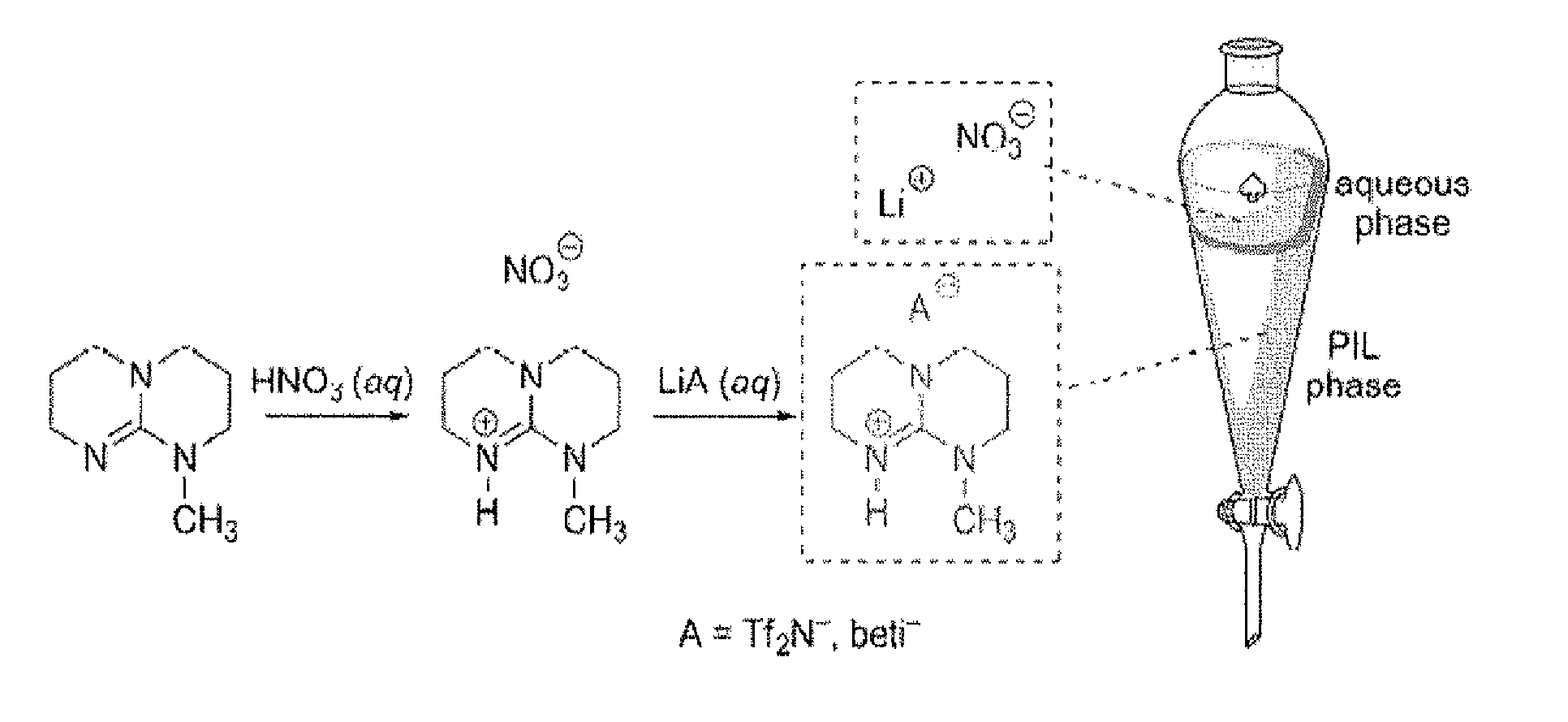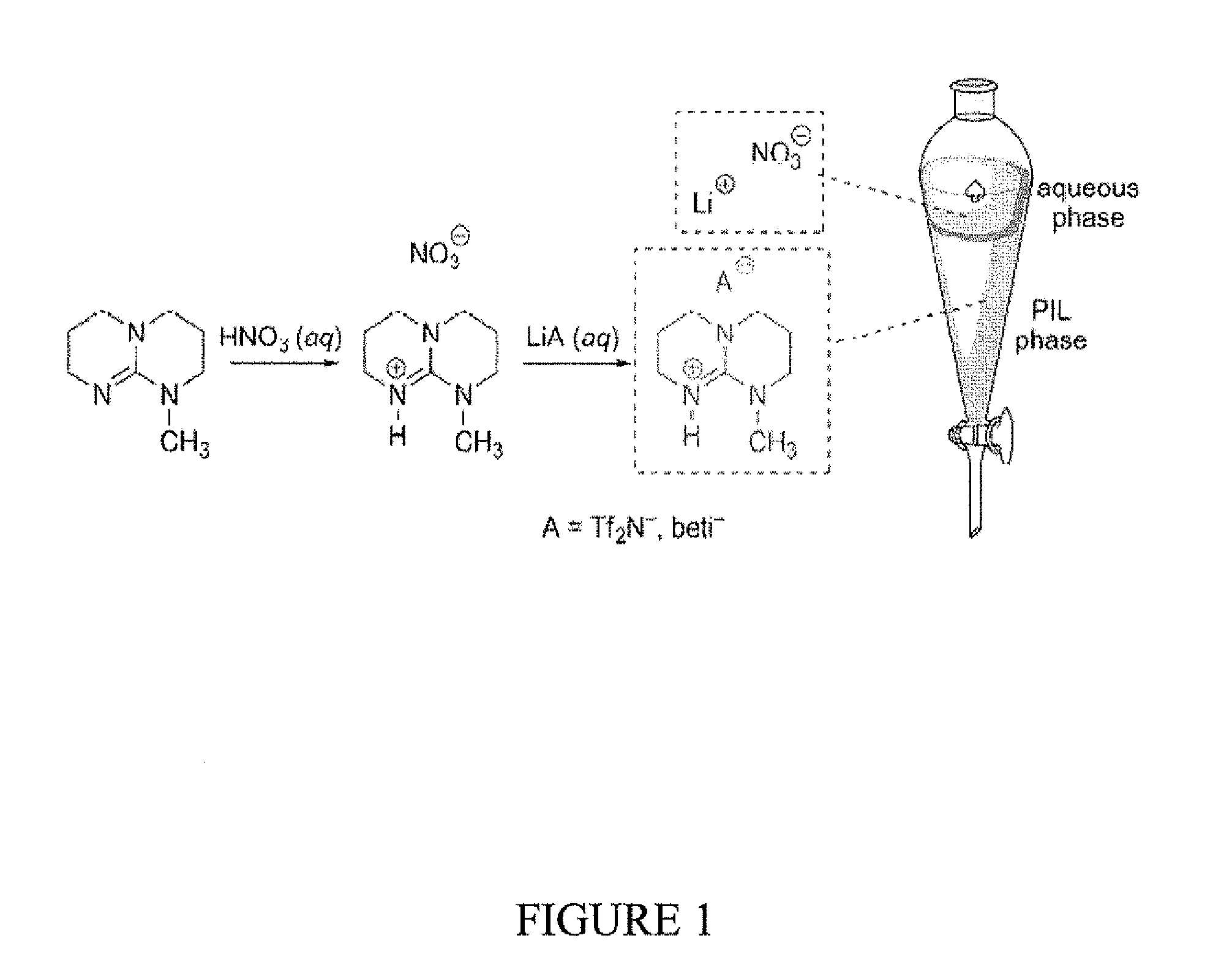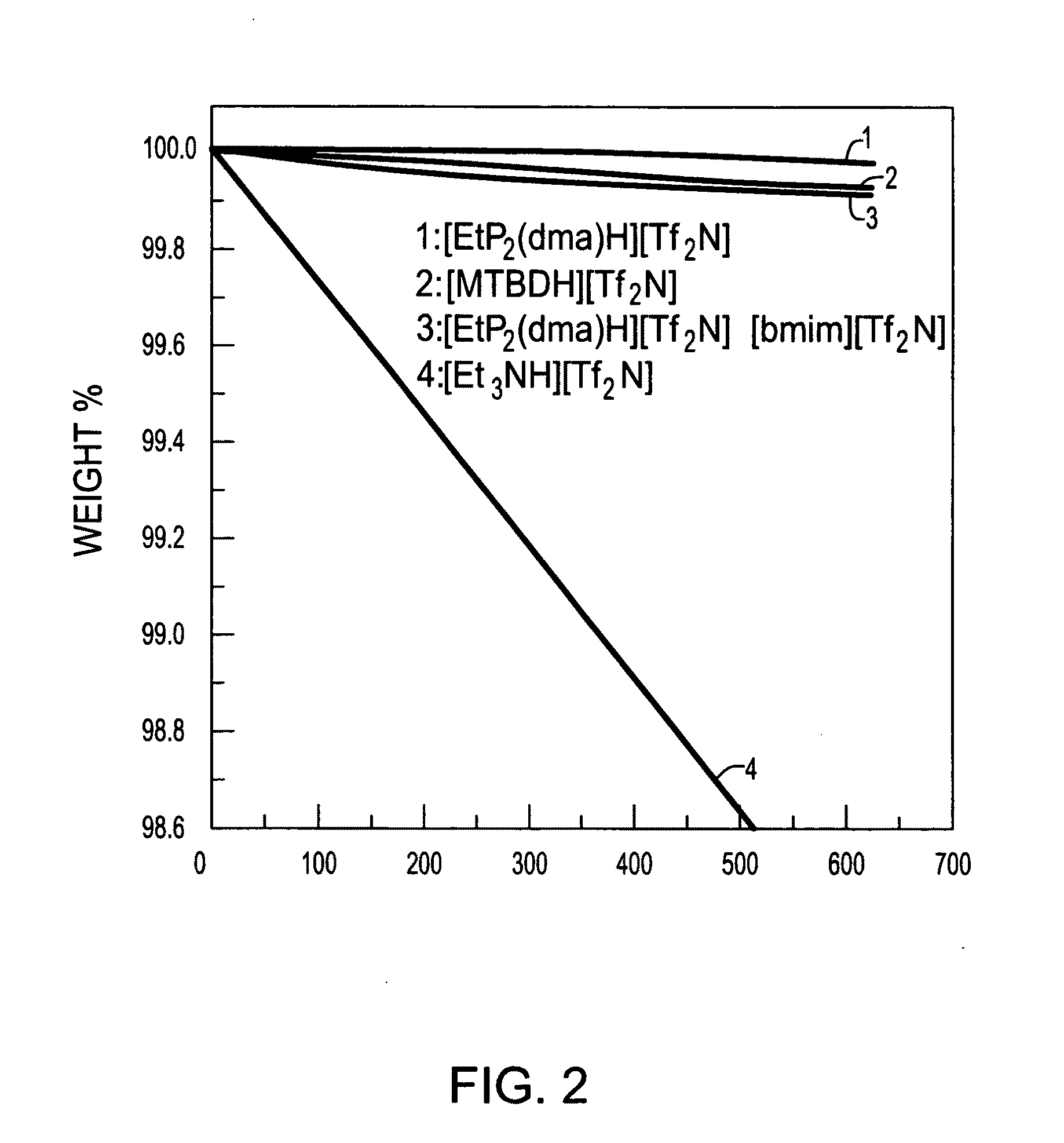Superbase-Derived Protic Ionic Liquids
a technology superbase, which is applied in the field of protic ionic liquid, can solve the problems of marked vaporization, increased vapor pressure, and protic ionic liquid's tendency to degrade over time, and achieve the effect of being advantageously resistant to degradation
- Summary
- Abstract
- Description
- Claims
- Application Information
AI Technical Summary
Benefits of technology
Problems solved by technology
Method used
Image
Examples
example 1
Preparation of Protic Ionic Liquids (PILs)
[0156]Sixteen exemplary PILs were prepared by reacting superbases, as shown below, with either of two perfluoroalkylsulfonamide superacids (specifically, either HTf2N or HBETI). The eight superbases are as follows:
[0157]The new PILs were synthesized in high yield (>98%) via a single pot synthesis in two steps, as depicted in FIG. 1. Referring to the PIL [MTBDH][Tf2N] for illustration, MTBD (pKa(BH+)=25.4) was initially dissolved in water and chilled in an ice bath, followed by careful titration with 10.6 N HNO3 to form aqueous [MTBDH][NO3]. Anion exchange was achieved by adding one equivalent of LiTf2N in water, resulting in spontaneous segregation of the dense, lower [MTBDH] [Tf2N] phase. After careful washing with double distilled water several times, rotary evaporation resulted in a nearly colorless free-flowing PIL in nearly quantitative yield. In this case, following vacuum drying at 70° C. overnight, [MTBDH] [Tf2N] contained some 110 p...
example 2
Thermophysical Properties of the Protic Ionic Liquids
[0158]Select thermophysical properties of eight of the exemplary PILs are shown in Table 2 below. Both thermogravimetric (TGA) and differential scanning calorimetry (DSC) testing was performed on select exemplary PILs.
TABLE 2Thermal properties of superbase-derived PILsaa Tfus is the temperature of fusion measured from DSC and Tdcp is the decompositiontemperature corresponding to a 10% mass loss measured using TGA. The shaded regionsdenote formulations that meet the arbitrary ionic liquid definition of possessing Tfus valuesbelow 100° C. The unshaded Tfus values represent borderline cases.
[0159]As shown by Table 2, their thermal decomposition temperatures (Tdcp) of the eight shown PILs fall in the 300-380° C. range, which is considerably above the operating temperature of PEM fuel cells. With this in mind, selected PILs were tested at 150° C. for a period of several hours using TGA. These results are shown in FIG. 2 (see also FIG. ...
example 3
Stability Analyses of the Protic Ionic Liquids
[0161]As illustrated in FIG. 8A (before KOH addition) and 8B (after KOH addition), [MTBDH][Tf2N] (right vial) remains stable when contacted with 1.0 N KOH solution in the presence of the indicator Nile Red, an observation consistent with the superbasicity of MTBD. In sharp contrast, for the conventional PIL [Et3NH][Tf2N] (left vial), the biphase degrades almost instantaneously to form an aqueous solution under these conditions, developing autogenous pressure during the process if a sealed vessel is used. Using the positive solvatochromic probe Nile Red (NR), it is also noted that the polarity of [MTBDH][Tf2N] is somewhat lower than that of conventional PILs such as [Et3NH][Tf2N] (ENR values are 214.0 and 209.1 kJ.mol−1, respectively). This trend can be discerned by visual inspection of water / EtOH mixtures containing NR (FIG. 8C). However, both PILs remain more polar than [BMIM][Tf2N] which has an ENR akin to EtOH (218 kJ mol−1). (Jin, H....
PUM
| Property | Measurement | Unit |
|---|---|---|
| temperatures | aaaaa | aaaaa |
| composition | aaaaa | aaaaa |
| chemical | aaaaa | aaaaa |
Abstract
Description
Claims
Application Information
 Login to View More
Login to View More - R&D
- Intellectual Property
- Life Sciences
- Materials
- Tech Scout
- Unparalleled Data Quality
- Higher Quality Content
- 60% Fewer Hallucinations
Browse by: Latest US Patents, China's latest patents, Technical Efficacy Thesaurus, Application Domain, Technology Topic, Popular Technical Reports.
© 2025 PatSnap. All rights reserved.Legal|Privacy policy|Modern Slavery Act Transparency Statement|Sitemap|About US| Contact US: help@patsnap.com



